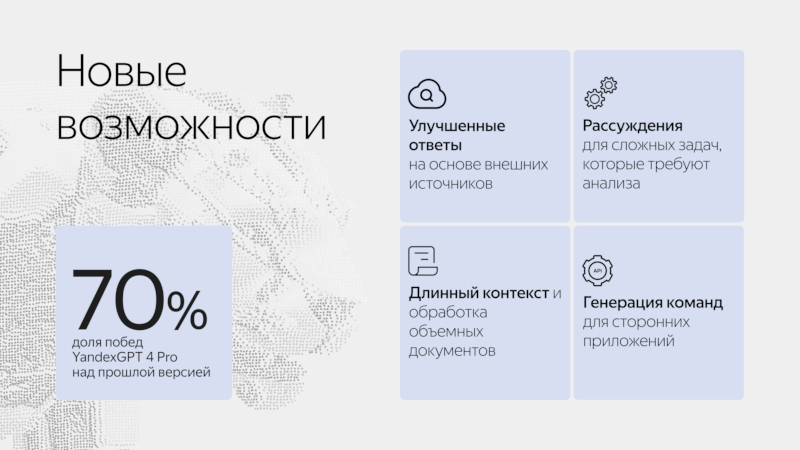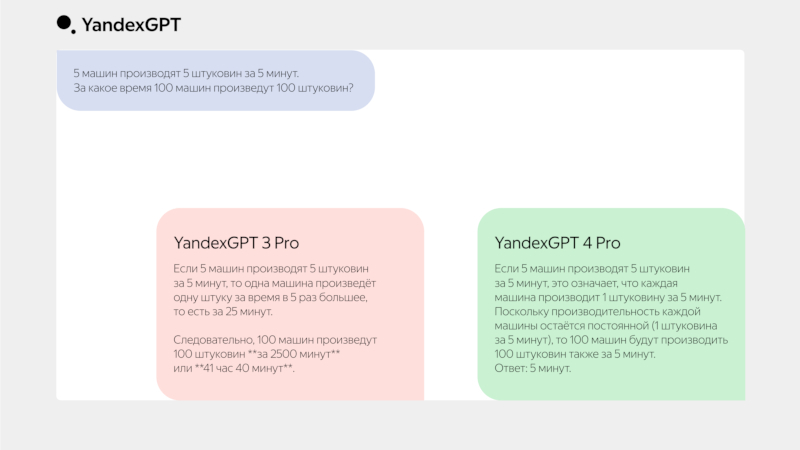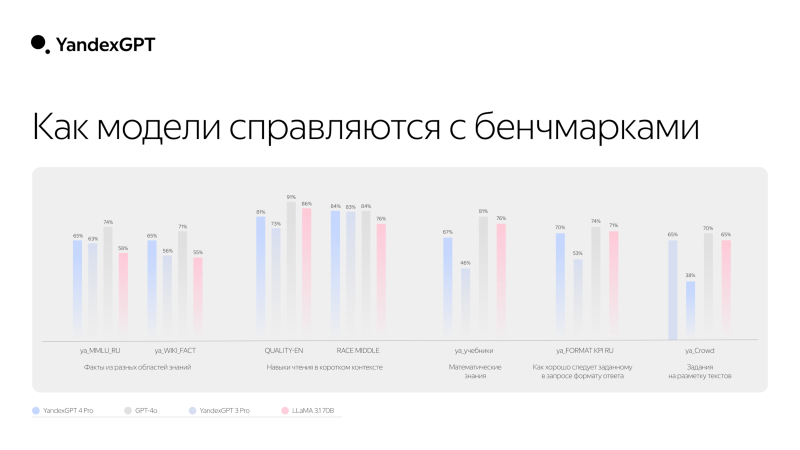«Yandex presented the new generation generative artificial intelligence models YandexGPT 4 – they include a more powerful Pro version and a lightweight Lite version. In terms of the quality of answers, they are superior to models of previous generations, they can reason, and the maximum length of queries has quadrupled and reached a volume of approximately 60 pages of text.

Image source: Yandex
You can try YandexGPT 4 models in the Yandex Cloud infrastructure by connecting to them via the API, but some of the functions are still working in test mode. Business users will be able to use them for a variety of purposes: sorting letters and customer applications, sending resumes for analysis, and performing other tasks related to text processing. YandexGPT 4 Pro will be useful in sales analysis and other complex tasks, and Lite will come in handy where it is important to get a quick response. In the future, new models will begin to be deployed in services for a wide audience – the first will be “Alice” with the “Pro” option.

The quality of YandexGPT 4 Pro answers compared to the previous generation Yandex neural networks has increased by an average of 70%, and in some tasks, for example, in processing open questions, it has come closer to OpenAI GPT-4o; YandexGPT 4 Lite is not inferior to the most powerful versions of the previous generation. The developers have improved the learning process of neural networks and provided them with the ability to reason: the models break complex problems into several simple ones and move step by step towards a solution, building a chain. In practice, YandexGPT will be able to study the client’s complaint, understand his problem and offer a solution.

The query context for next-generation models has quadrupled to approximately 60 pages of text, helping them answer questions more effectively using external sources such as articles or company documents. The share of made-up facts in answers decreased from 4% to 2.1%; On average, the response rate doubled. YandexGPT 4 neural networks have received support for controlling external applications – they will be able, for example, to find an empty seat on a plane and book a ticket for it. Application developers will need to describe the features and command rules, and the models will decide when to launch the feature.